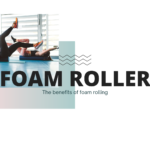Hitting 40 is a milestone, but it comes with its load of body changes too. One of those pesky changes is muscle loss, also known as sarcopenia. Seriously, it lurks around like an unwanted guest. But why all the fuss about muscles anyway? Well, muscle mass is key for mobility, stability, and generally just being able to do life comfortably.
From about the age of 30, there’s a gradual loss in muscle mass if specific actions aren’t taken. We’re talking about losing around 3-5% every decade if left unchecked. Ladies, listen up—it often hits women a bit harder due to hormonal changes, especially post-menopause. That doesn’t mean fellas get to relax. Nope, this concerns everyone.
Spotting the early signs can give you a head start. Feeling weaker than usual or struggling more with physical activities that were once a breeze might be the whispers of muscle loss telling you to take action. It’s not about ripping muscles like a bodybuilder. Really, it’s about maintaining your current muscle health to keep moving freely without discomfort.
Health experts, trainers, and those who’ve been through the grind have stories and statistics backing the importance of addressing muscle loss. As life nudges past 40, keeping muscles in shape means retaining not just physical ability but mental sharpness and life quality too. So don’t sleep on it—being proactive now leads to smoother sailing later.
Nutrition Essentials: Fueling Your Body for Muscle Maintenance
When it comes to keeping those muscles from waving goodbye after 40, what’s on your plate matters more than ever. It’s not just about eating enough, but eating right. Protein often takes center stage here. Why? Because it’s like the building block that repairs and maintains muscles. Eggs, lean meats, legumes, and nuts are fantastic picks for a protein-packed diet.
But! Don’t go thinking it’s all about protein. Your body craves a balance of vitamins and minerals, which act like little helpers in muscle maintenance and repair. Calcium and vitamin D are big players, contributing to muscle function and bone health.
And hydration—do not underestimate it. Keeping your body well-hydrated aids in maintaining the elasticity of muscle tissue. Water, and lots of it, is key. So, get chugging!
Now, tackling a balanced diet doesn’t mean you need to reinvent the wheel each meal. It’s about making sustainable changes. Think of adding a handful of nuts as a snack or swapping a standard soda for a protein smoothie. It’s about those small tweaks that make a world of difference.
Meal planning can be your secret weapon. Planning ahead helps ensure you’re ticking all the nutritional boxes. Nutritionists can be great allies in this, helping tailor a meal plan that considers your unique needs and preferences. Remember, food is fuel, and the right fuel keeps you running strong.
Smart Exercise Strategies: Building and Preserving Muscle Strength
Keeping muscles strong after 40 isn’t about clocking endless hours in a gym. It’s about smart training, exercises that pack a punch without knocking you out.
Resistance and strength training are your best friends here. Lifting weights, using resistance bands, or even body-weight exercises like squats and push-ups work wonders for maintaining muscle mass. These exercises focus on strengthening those muscle fibers that can weaken over time.
Cardio has its place too, but it’s resistance training that really shines for muscle preservation. If you’re new to this, take it slow and maybe tag along with a buddy or hire a trainer to kick things off safely.
Flexibility and balance workouts add another layer of goodness. Mobility exercises — keep muscles pliable and joints happy, helping you move seamlessly without straining those muscles.
Creating a fitness routine that suits your style and schedule can mean the difference between giving up and sticking with it. Whether it’s 20 minutes of daily exercises or a longer session every other day, consistency builds resilience.
Remember, warming up and cooling down are like bookends to your workout—it helps your muscles get the memo that it’s time to work, and later, to rest.
Lifestyle Changes and Recovery: Embracing Long-term Muscle Health
Nail down the muscle-maintaining process by reshaping your daily habits. Rest isn’t luxury—it’s a necessity when it comes to muscle recovery. Sleep is where the magic happens, letting those muscles repair and grow stronger. Skipping on sleep? That can hijack your muscle gains.
Stress can sneakily chip away at your muscle health, too. Learning to manage stress through breathing techniques, hobbies, or even just chilling with a good book can make a difference. It’s about finding what relaxes you and sticking with it.
Regular health check-ups give you insight into what’s working and where you might need to pivot. Fitness experts and nutritionists provide tailored advice to fit your unique journey, making sure you’re on the right path to muscle maintenance.
And don’t underestimate the power of community. Whether it’s a workout group, family, or online forum, having a support system keeps motivation levels high and accountability in check. These connections turn challenges into shared triumphs.
Long-term muscle health isn’t about drastic overnight changes. It’s those steady, daily steps combined with informed lifestyle choices that secure your muscle’s future.











The Body Needs Maintenance
Little kids move all the time and are told to sit still. Then, when we are older, we sit still and are told to get up and move. We can’t win. Seriously though, all things in moderation and all things in their time. Moving is so important to keep the body in tip-top shape that I believe everyone should pay more attention. Even thinking and overall well-being are affected for the better.
Hi Iris
I completely agree! It’s funny how our relationship with movement changes over time.
You’re spot on about moderation and timing. Even a short walk or stretch can do wonders for our mood and overall well-being. Let’s keep encouraging each other to stay active!
Best;
Kathy
Hello!
I really appreciate this article on preventing muscle loss after 40! It’s something I’ve been thinking a lot about lately, as I just turned 40 in November and have noticed that my body doesn’t bounce back like it used to.
I agree with the emphasis on strength training—I’ve found that exercising using my own body weight, instead of “lifting weights”, a few times a week really helps maintain muscle mass. It’s also made me more mindful of my diet and protein intake.
I’m curious, what do you think about supplements like collagen or amino acids for supporting muscle health? I have started taking a joint supplement and have been eyeing different supplements on the market that have collagen and amino acids in them to support my body as I age.
Greatly appreciate this article, thank you!
Angela M 🙂
Hi Angela,
I’m glad to hear you’re finding strength training beneficial! Bodyweight exercises are a fantastic way to maintain muscle mass and build strength. I completely agree that being mindful of diet and protein intake is key to supporting our fitness goals.
Regarding supplements, I know for a fact collagen and amino acids can be great additions for muscle and joint health, just to mention a few benefits. Amino acids are the building blocks of protein, and I can’t speak enough about the benefits of collagen for supporting joint health and skin elasticity.
I also believe mobility exercises are crucial for keeping our joints moving and feeling great as we age. (Girl! We must take care of those cracking knees as early as possible.) I plan to post more articles on this topic soon, along with some brands that have worked well for me.
Thank you for your thoughtful insights, and I look forward to sharing more!
best;
Kathy